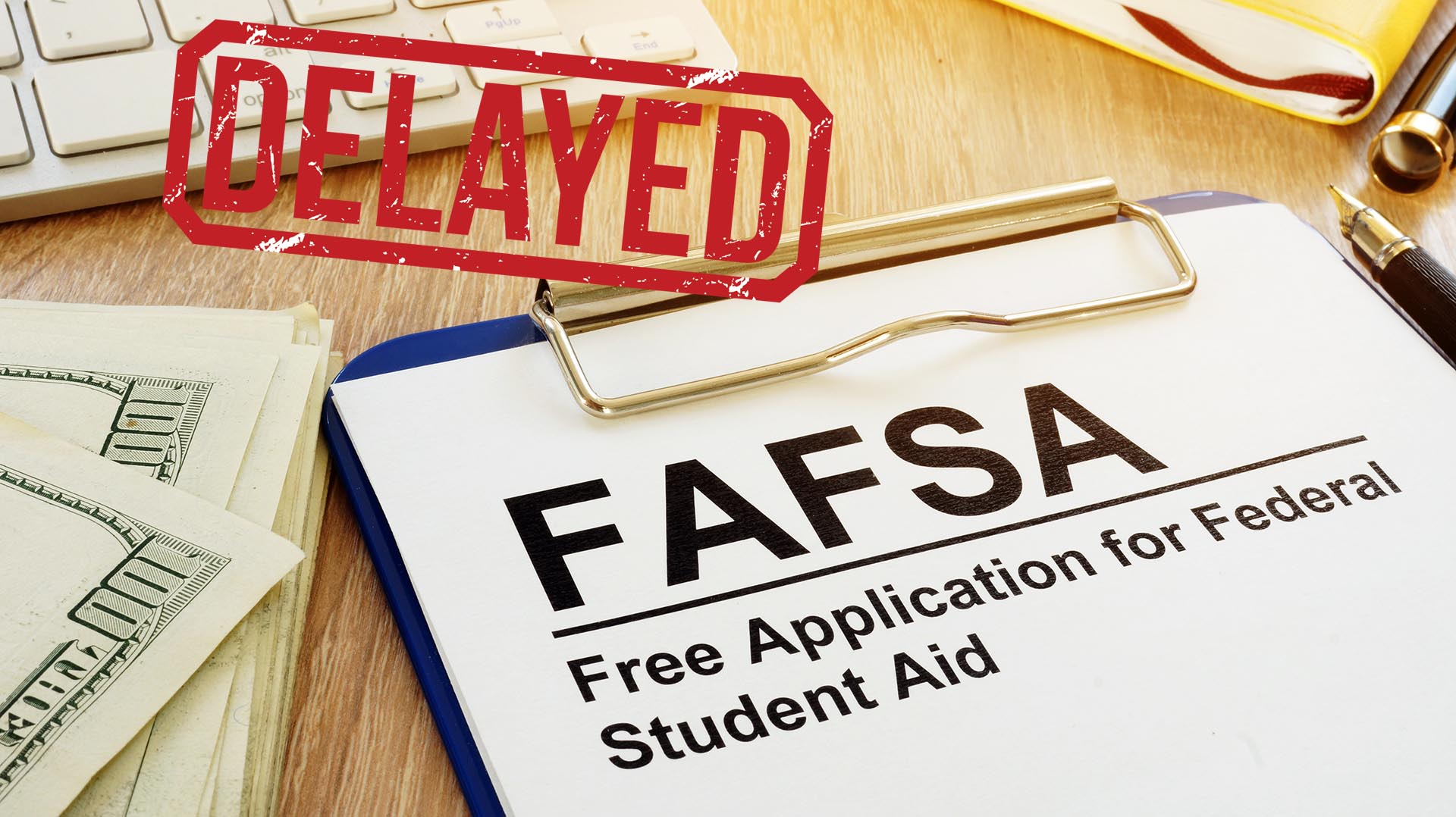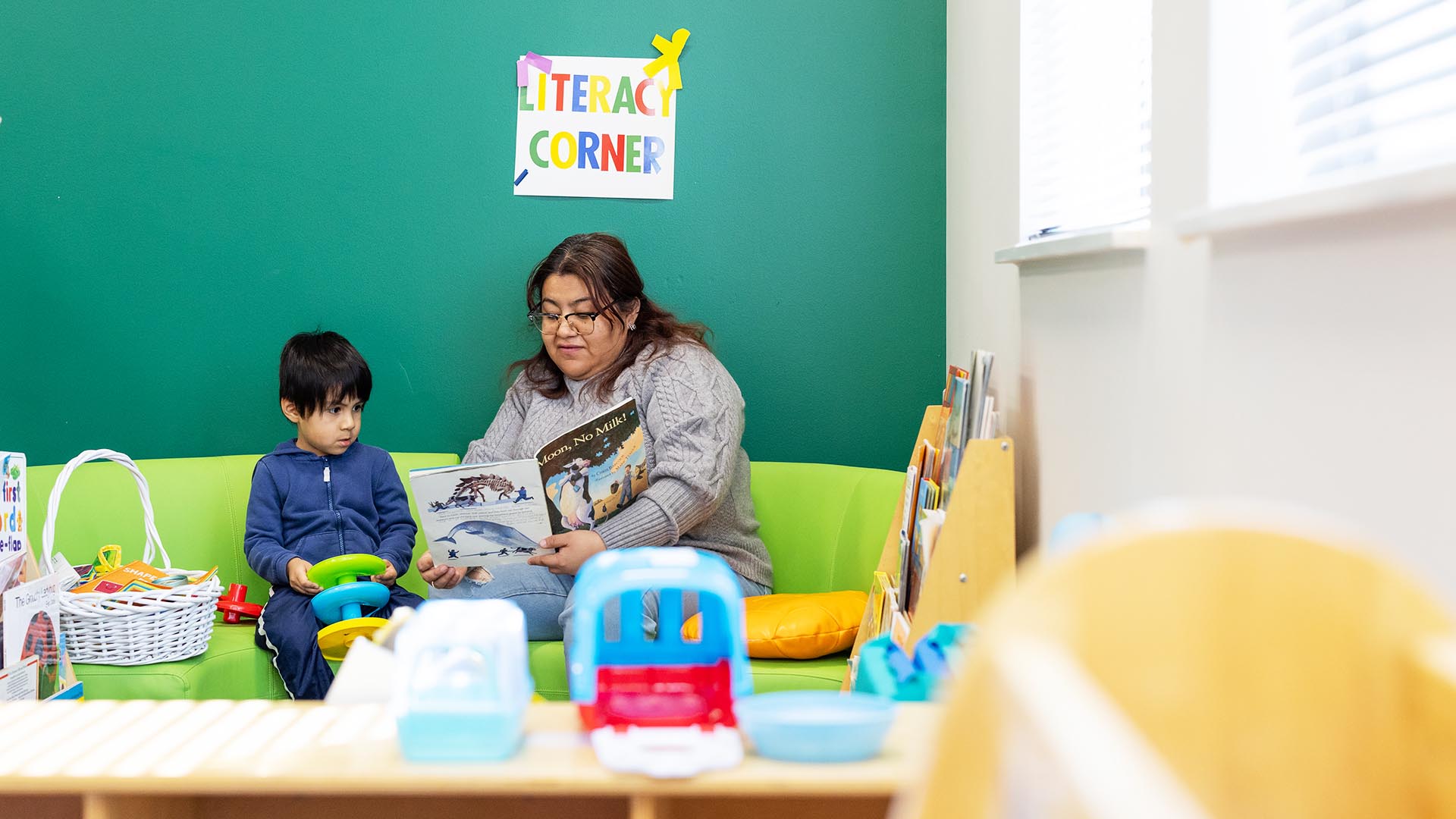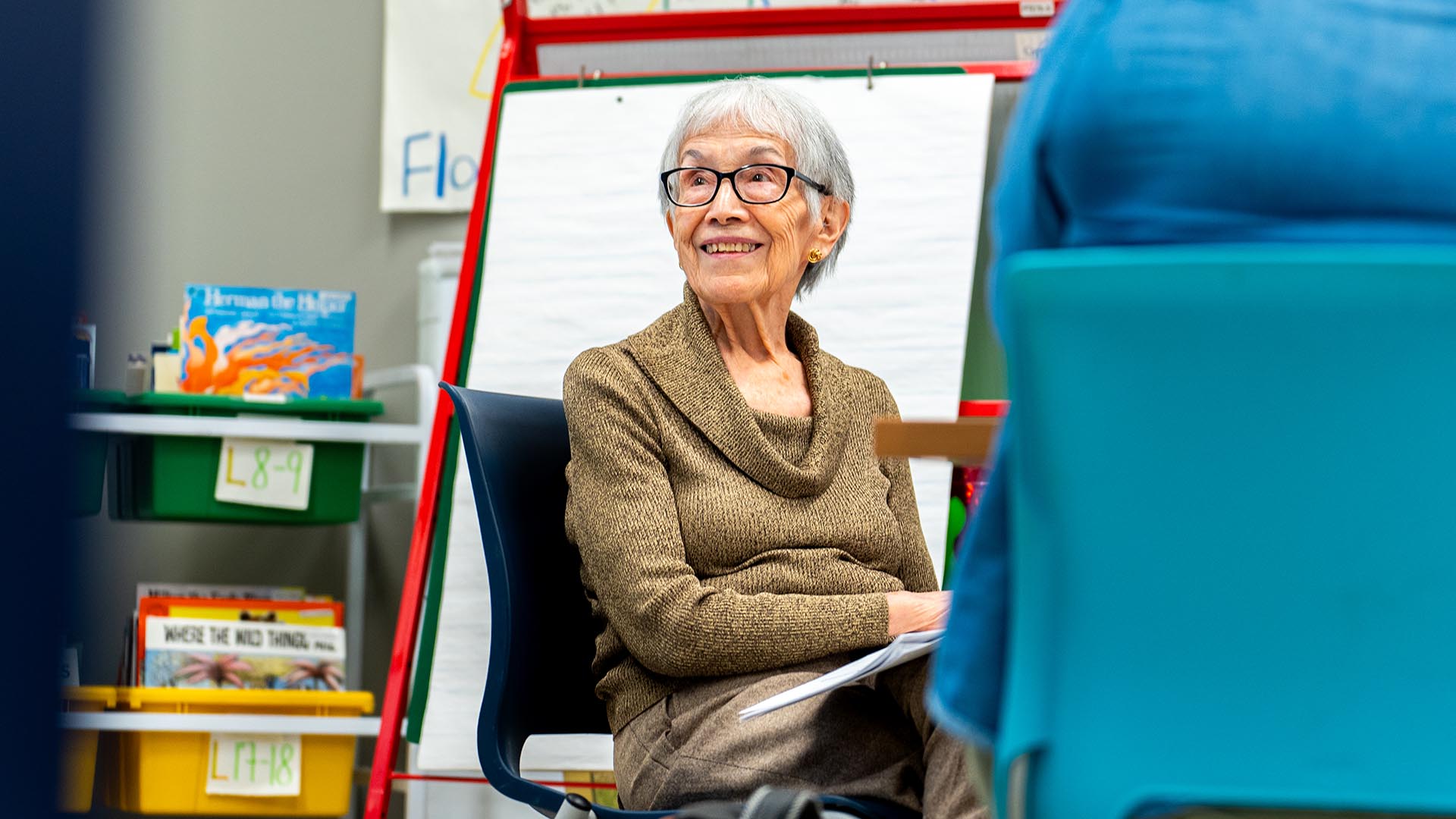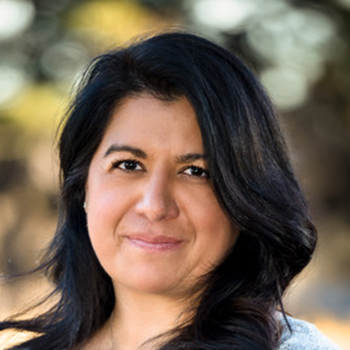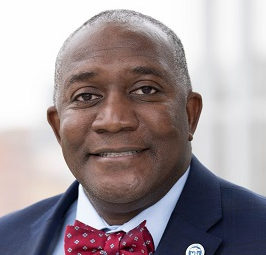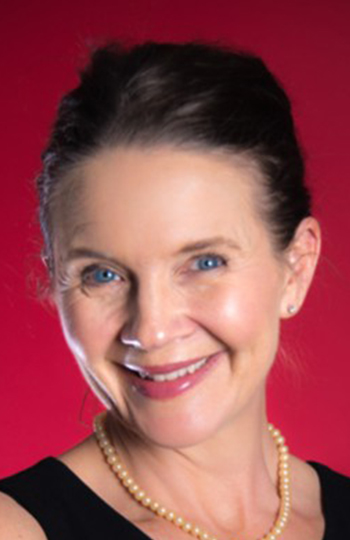Principal catalyst
Hard work and perseverance fueled Michael Atkins’ journey from school janitor to principal. Now he’s empowering students to be themselves.
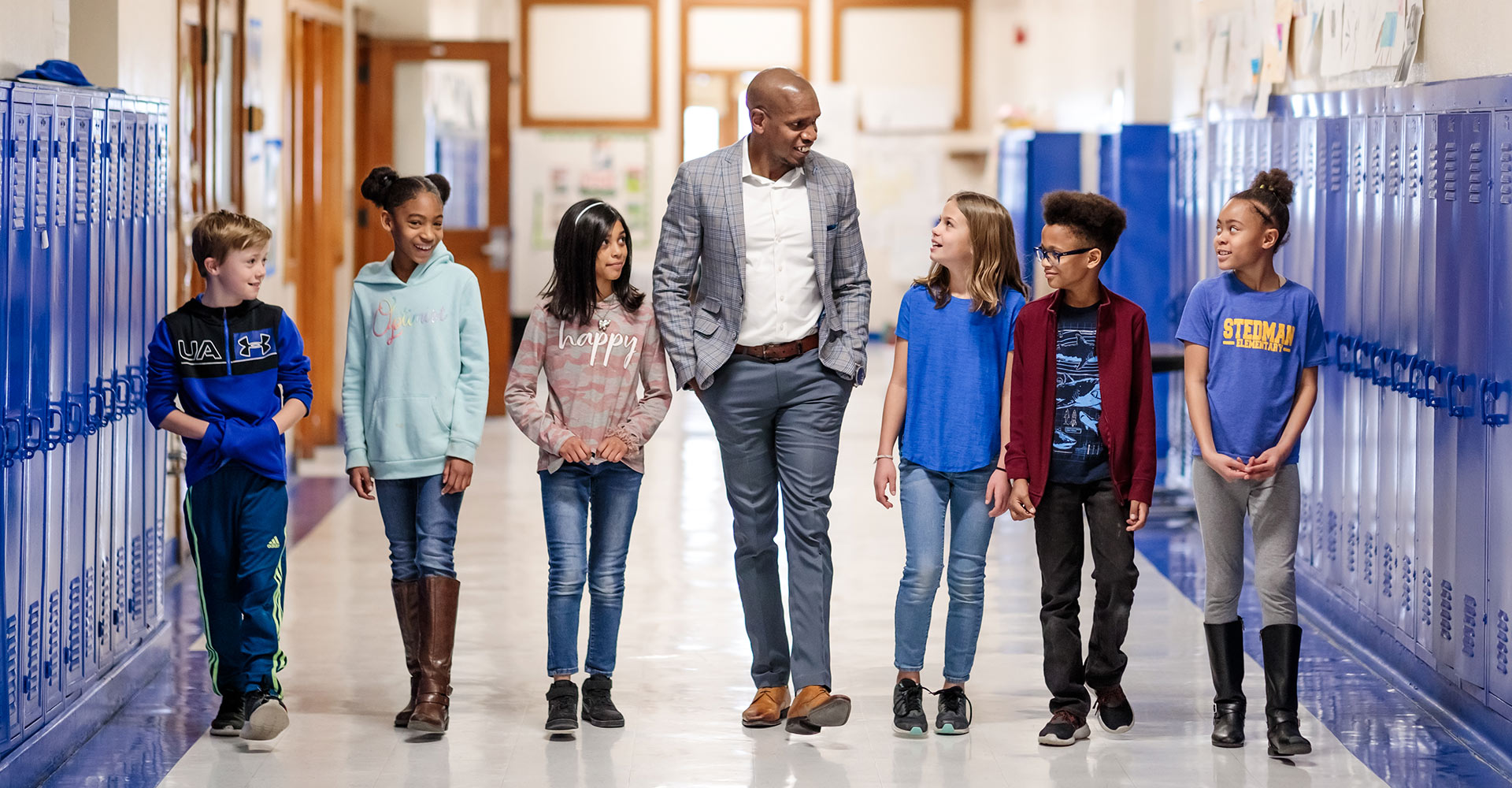
After working in public schools for his entire adult life, Michael Atkins knows exactly which grade is his favorite: second grade.
“Students are at a place within their development where they can advocate for themselves,” he says. “They’re absolutely fun. They’re just nice and well-rounded human beings who can communicate well.”
“They make (teachers) feel like superheroes,” he says.
But as he wraps his first year as principal of Denver Public Schools’ Stedman Elementary in Park Hill, Atkins is showing that principals can be heroes too. He’s leading a historic school through a heroic revitalization. Stedman’s dual-language, English-Spanish program is thriving. The school’s lights stay on into the evening for enrichment programs, PTA meetings and parent-education nights. Test scores are rising. The “Today” show even stopped by last fall to shoot a segment on the school – and Atkins.
Indeed, the principal’s office is a long way from where Atkins started his career: cleaning up buildings as a DPS janitor.
But it was working for DPS that sparked Atkins’ interest in education – and led him to Metropolitan State University of Denver, where he enrolled as a young father, working during the day and attending classes at night. He graduated in 2011 with a bachelor of arts in behavioral science and a minor in K-5 education.
“The thing I truly loved about (MSU Denver) was its diversity,” says Atkins, who is African American. “I didn’t feel like an ‘old’ student going to night class, per se. I fit into the cultural norms of the University, so I felt very comfortable within that space.”

Finding that cultural comfort is key to Atkins’ educational philosophy.
He grew up in Park Hill during Denver’s era of busing. From the mid-1970s to the 1990s, some DPS students, including Atkins, were bused out of their neighborhoods to attend schools in other parts of the city. The policy was an attempt at desegregating the city’s schools, but his experiences showed that problems still existed.
He recalls that at southeast Denver’s Hamilton Middle School, where he was bused, the floors of the building appeared to be segregated by race.
“I distinctly remember walking into a classroom on the first floor, and it was all of my white friends,” he says, “and the teacher looking at me, like, ‘Well? Can I help you,Mikey?”
He also remembers one of his teachers in middle school referring to students of color as “the bus kids,” he says.
“At the time, I didn’t put racism behind it, really. I put more socioeconomic status behind it,” he says. “But as I look back, it was most definitely about race.”
However, Hamilton was also the school where Atkins had his first African American teacher, Mr. King.
“He was my seventh-grade science teacher, and I remember having just so much respect for him – the way he carried himself,” Atkins says. “I didn’t see a black man in a suit until I had Mr. King. That was my first experience of an African American man who was in a position of power.”
During those formative years at Hamilton, Atkins became keenly aware that his teachers were not properly prepared for multicultural classrooms. As result, he says, black and brown students experienced punitive discipline.
“I was suspended several times in middle school for not being compliant,” he says. “And by then, I truly understood that this environment wasn’t to serve me. This environment was to control me.”
The experience had a profound influence on his thinking, first as an education student and now as an educator.
Atkins credits his student-teaching advisor at MSU Denver, Lorretta Chavez, Ph.D., with helping him further develop that educational philosophy while also setting him on his current path.
“I wanted to serve in Park Hill to do my student teaching,” he says. “She strongly suggested and encouraged me to branch out.”
With Chavez’s guidance, Atkins landed at Godsman Elementary in southwest Denver, where a significant portion of the students were learning English as a second language. The experience put him in a place where he was forced to learn how to serve all children and not just the children with whom he culturally aligned, he says.
After years of teaching in DPS,Atkins earned his shot atStedman, back in his beloved Park Hill, through a principal-in-residence program. After a year working under a mentor – he calls it a “yearlong interview” –Atkins got the job and got to work on embracing the school’s diverse population.
With Atkins at the helm, school employees attend in-depth sessions on equity. They interrogate their own biases with assessments such as the Intercultural Development Inventory. And out-of-school suspension is now a disciplinary last resort.
“This is the only place where children can make mistakes and you give them the social-emotional skills to correct those mistakes,” says Atkins. “If you punish children, all it tells them is that they’re not good enough. It doesn’t change behavior if you suspend them. It doesn’t build skills.”
Stedman’s focus isn’t on student compliance, he says.
“It’s critical thinking,” he says. “It’s curiosity; it’s allowing students to be themselves.”

